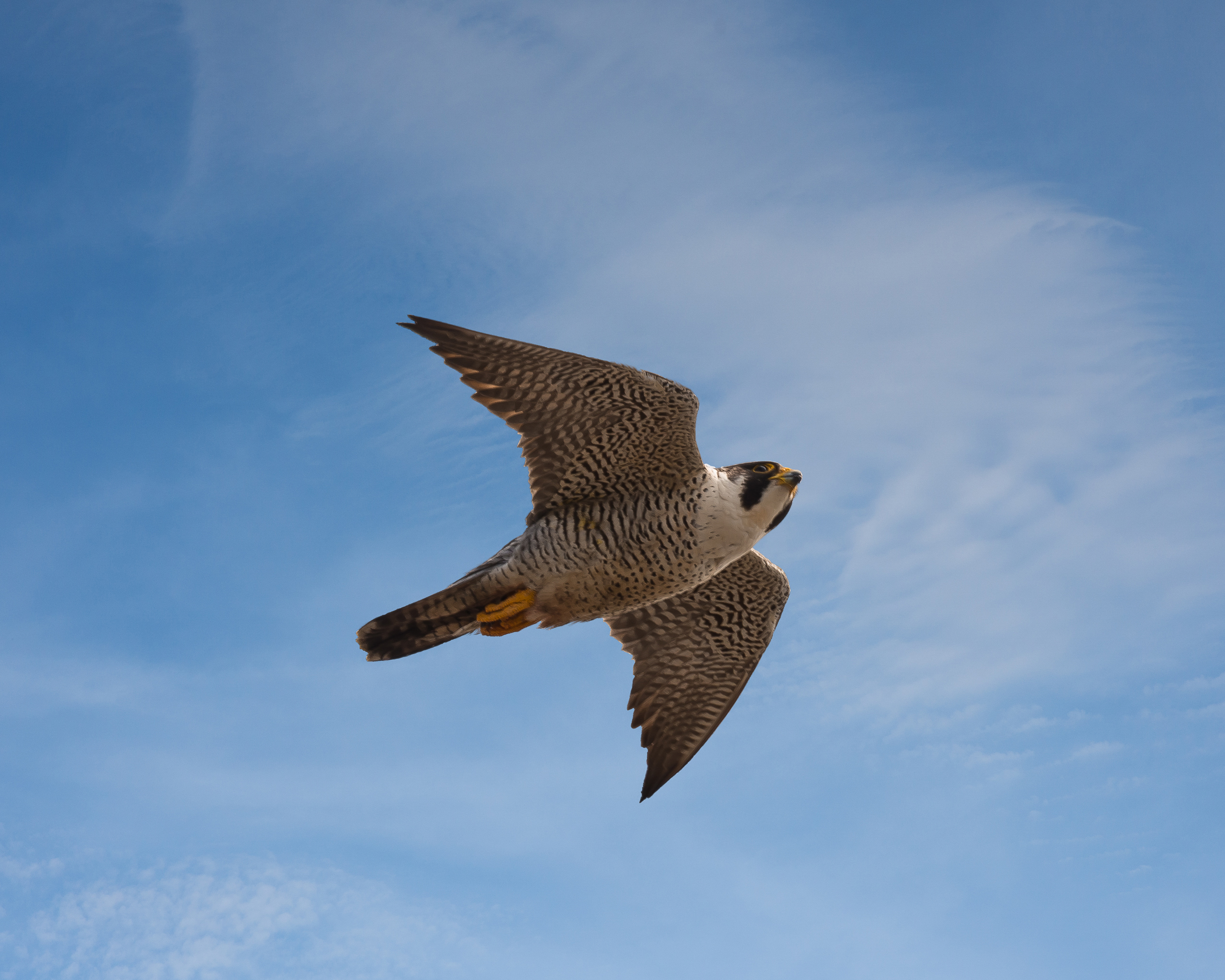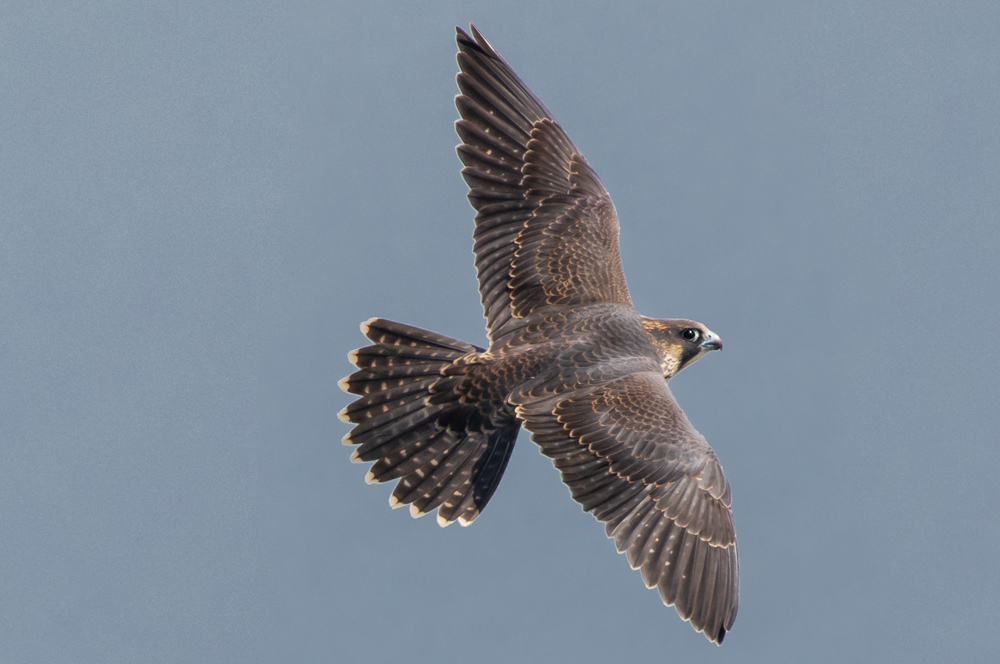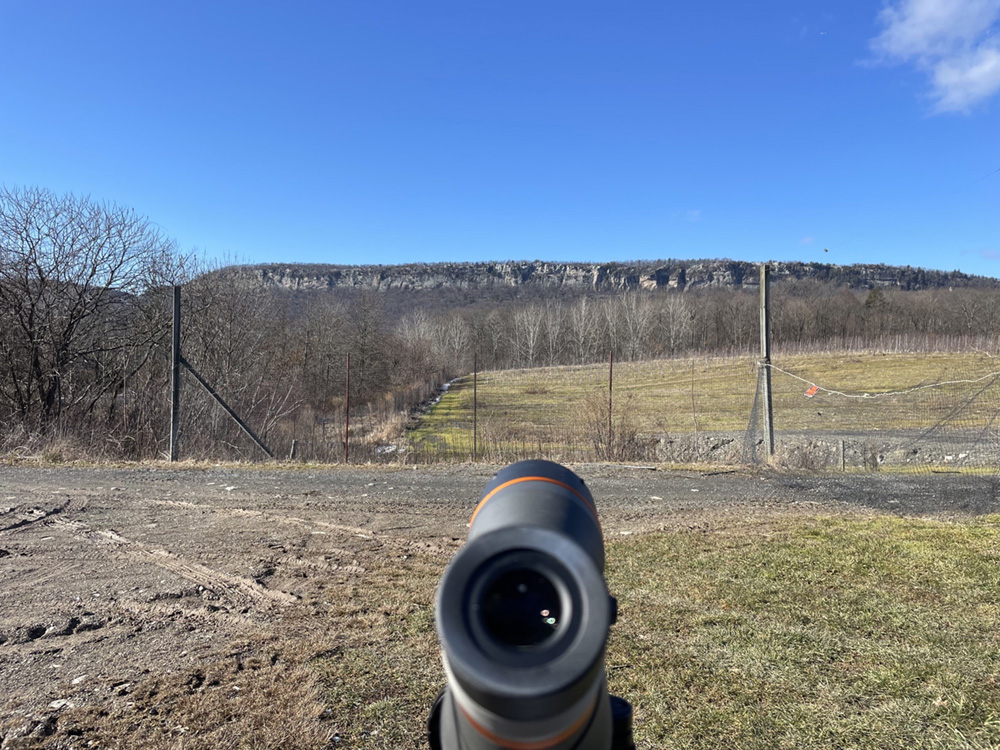2024 PEREGRINE WATCH SEASON
We are glad to report that there was a successful peregrine fledgling from the Millbrook nest site. Unfortunately, this year’s peregrine falcon nest at the Trapps did not succeed. Peregrine nests can fail for multiple reasons, including predation, temperature changes and human or animal disturbance, and our Patrol Rangers and Peregrine Watch team are assessing the Trapps eyrie.
As a result of this development, we will be removing the temporary climbing restrictions in the Trapps on Saturday, June 29.
We thank our dedicated Conservation Science staff and Peregrine Watch participants for their diligent observations of the peregrine sites and the climbing community for their patience and support of our efforts to protect these amazing falcons.
Click here to learn more about peregrines on the Shawangunk Ridge.
Peregrine Watch Observations
5.14.24 – Preserve Peregrine Cam: Footage shows a peregrine falcon vocalizing in the Shawangunk Ridge.
This peregrine is “ee-chupping.” Ee-chup is a peregrine-to-peregrine vocalization. Because this sounds like a “whisper call” or a softly vocalized call, it’s likely these peregrines are communicating in a friendly way to each other. Perhaps the peregrine staying in the eyrie is communicating to their partner something along the lines of, “have a nice flight” or “bring me back a tasty morsel!”

5.13.24 – Peregrine Watch 2024: The peregrine falcons at the Trapps cliff are active! They have selected their eyrie (nest site) and have been observed displaying breeding behavior including perching, prey exchange and incubating their eggs. The incubation period for peregrine falcons is about thirty days. Once the eggs hatch, the nestlings stay with their parents for about 35-42 days. During this time, the adult peregrines will show the nestlings the ropes of flying, hunting, and being able to live independently.

4.19.24 – Peregrine Watch 2024: Mohonk Preserve Conservation staff and Peregrine Watch volunteers have confirmed nesting peregrine falcon activity in the Trapps.
4.8.24 – Preserve Peregrine Cam: Two peregrine falcons are seen feeding on a northern flicker in the Shawangunk Ridge.
3.14.24 – Preserve Peregrine Cam: Tune in with your sound on for some peregrine falcon calls! This footage shows a pair of peregrine falcons on an eyrie in the Shawangunk Ridge talking to one another. Falcons will use various different calls to signal their presence to potential mates, communicate needs to their partners or to establish territory.

3.1.24 – Peregrine Watch 2024: The 2024 Peregrine Watch season started with a successful volunteer orientation on February, 14th with 18 new volunteers signed up. Overall, the group has 32 volunteers who will monitor the ridge for peregrine falcon activity.
2.5.24 – Preserve Peregrine Cam: A peregrine falcon takes flight off an eyrie on the Shawangunk Ridge. Did you know the peregrine falcon is considered the fastest member of the animal kingdom? Peregrine falcons are very fast fliers, reaching speeds up to 69 mph in direct pursuit of prey and 200 mph when hunting from high above! These amazing high-speed dives are called hunting stoops.
1.16.24 – Preserve Peregrine Cam: A peregrine falcon preening their feathers to keep them clean.

1.18.24 – Peregrine Watch Volunteer Orientation: For information about participating in our Volunteer Peregrine Watch program, we are holding an orientation session on February 14 from 6:00 PM – 7:30 PM. Click here for more information on this and our other Volunteer opportunities.
12.21.23 – Preserve Peregrine Cam: Enjoy this video of peregrine falcon activity on the ridge.
